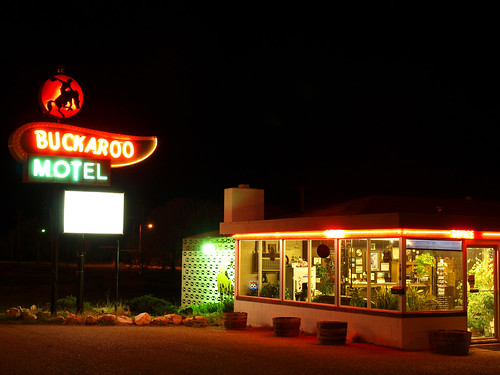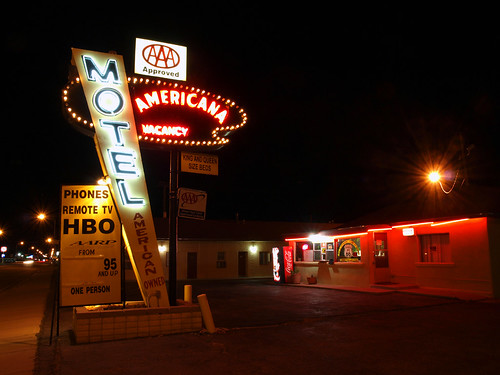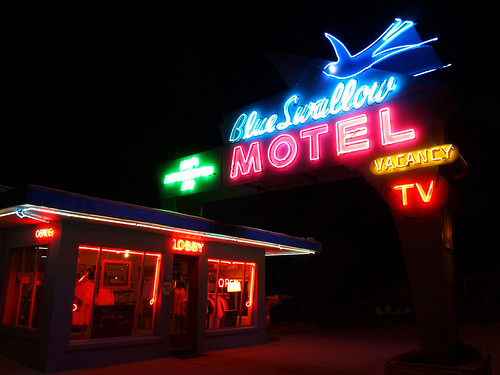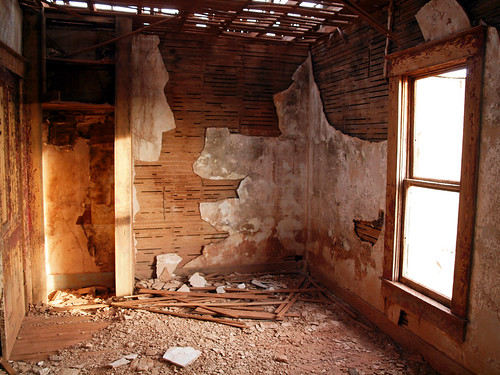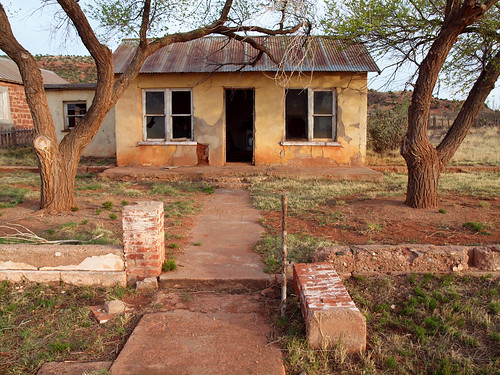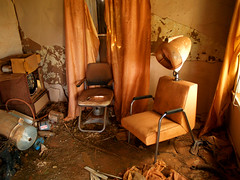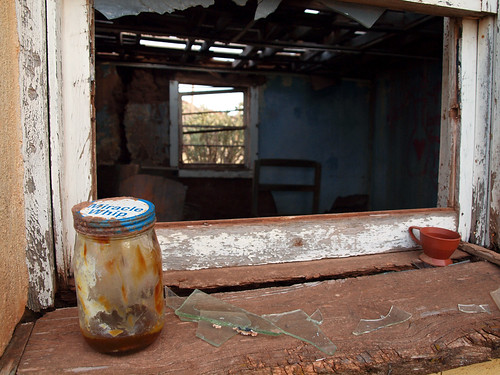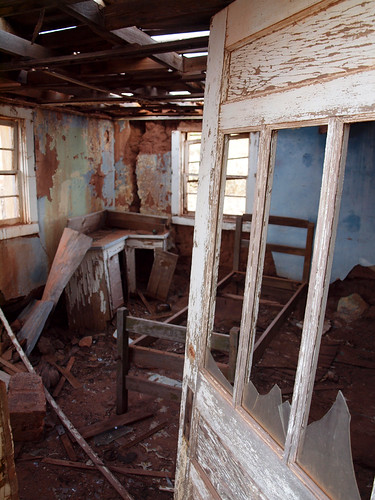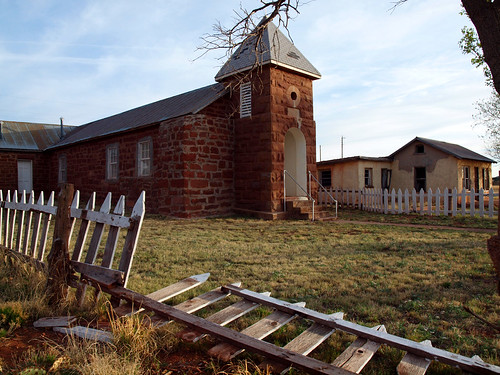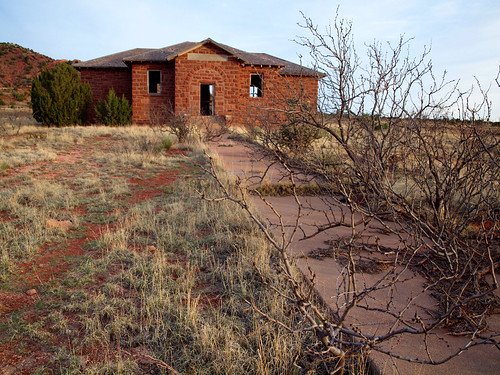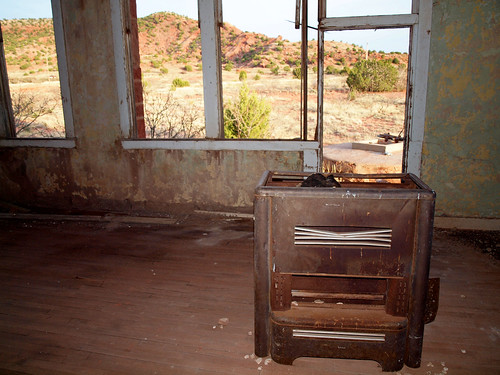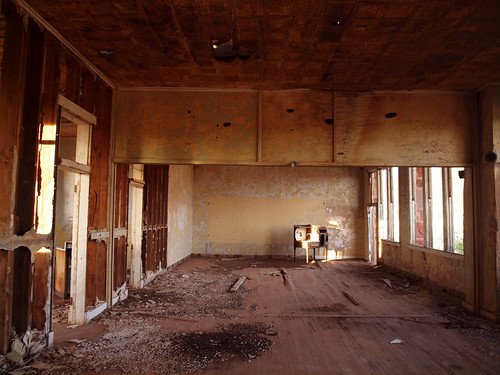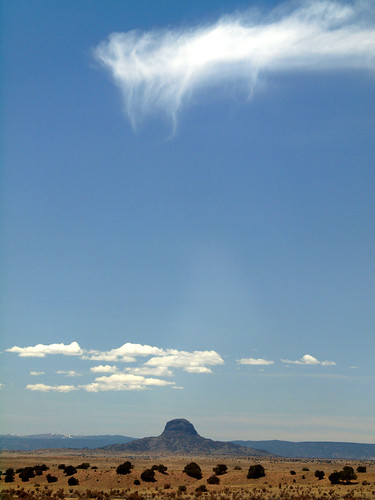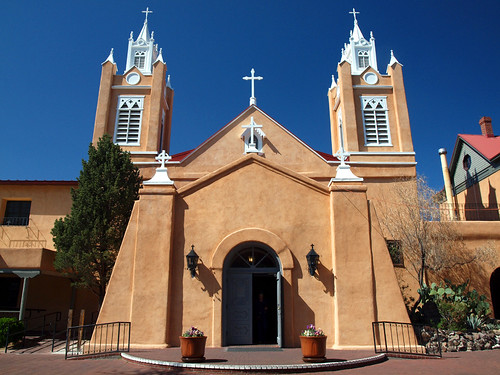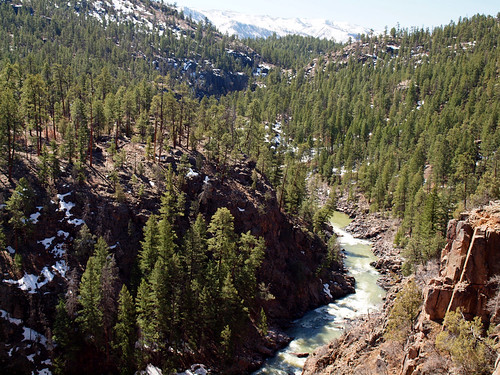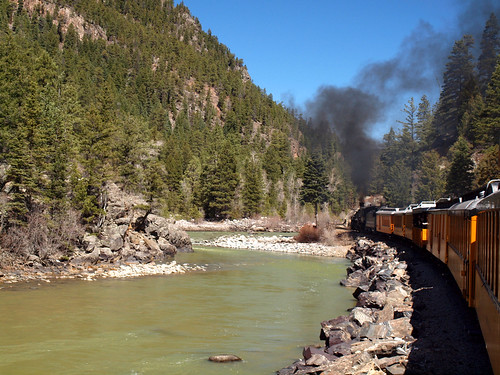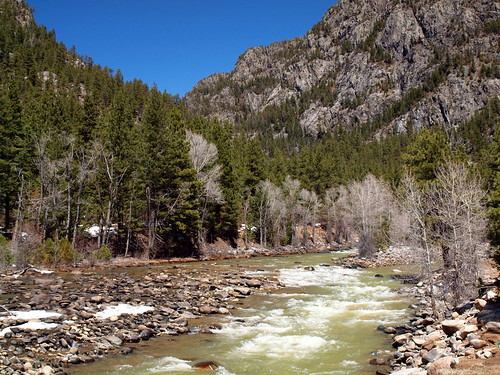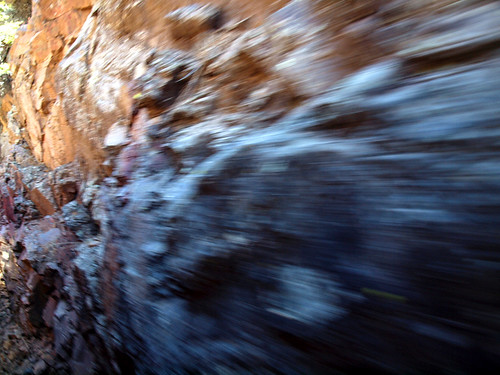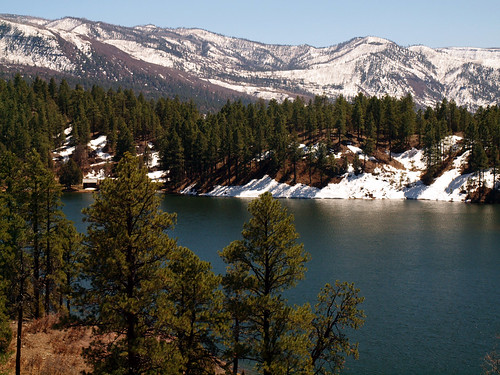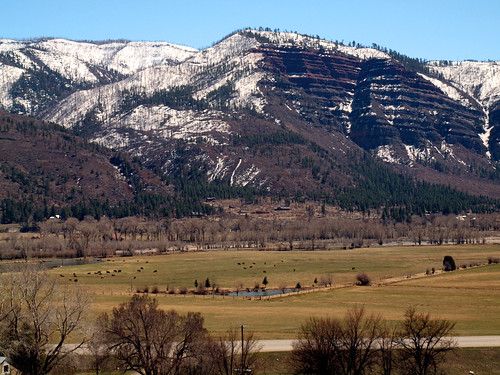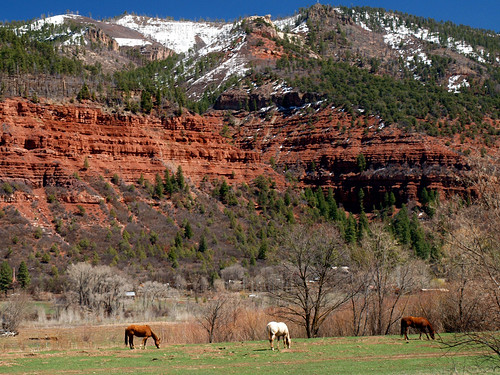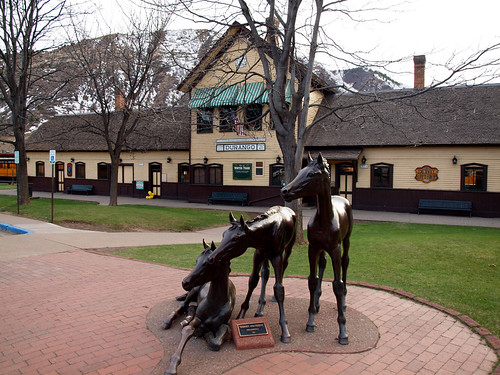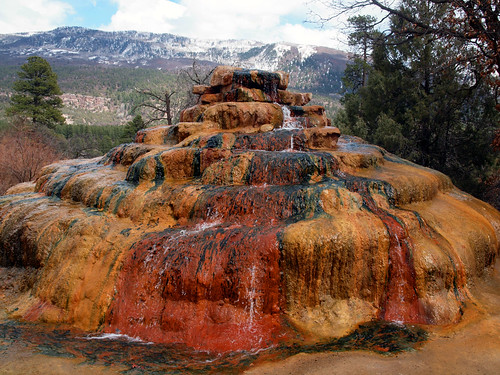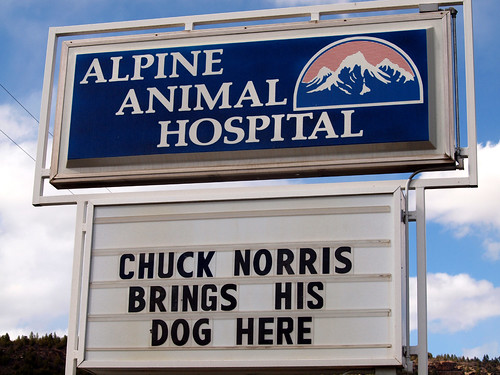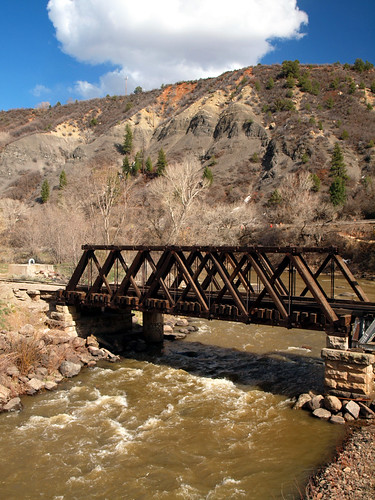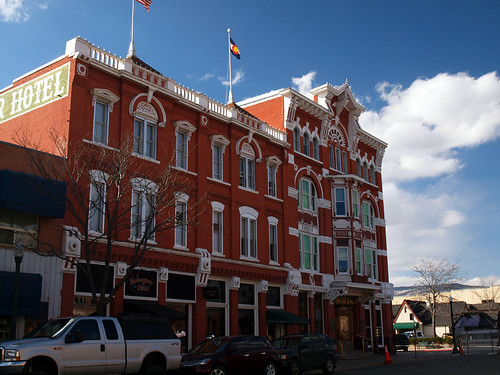We left Tucumcari as the sky turned cloudy, and we would drive through rain as we headed towards Texas. By the time we reached Amarillo, the storm turned heavy. Several inches of drenching rain had fallen by the time we stopped at one of Amarillo's key attractions - the Cadillac Ranch.
Cadillac Ranch was founded in 1974 by the eccentric millionaire Stanley Marsh 3. Although it is located along part of I-40, it has become a Route 66 stopping point. It features a collection of old Cadillacs, stuck into the earth at the same angle of the Great Pyramid in Egypt.
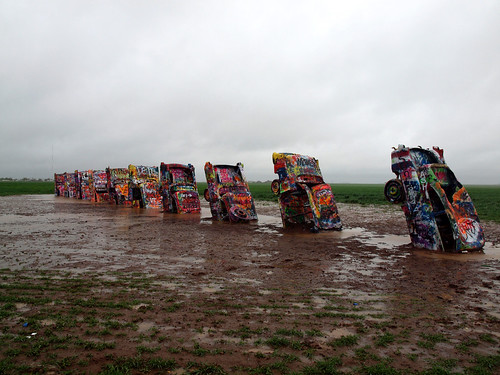
The ranch is located in a field alongside an I-40 access road. To reach the old cars, you cross under a small gate and walk along a dirt path that cuts through a field. With the heavy rain that day, the dirt path was a muddy mess. I wasn't sure if it was worth trudging through the muck, but I headed on anyways. It was easier to walk through the field, since the mud wasn't as deep. I still ended up getting a thick coat of mud on my shoes and pants.
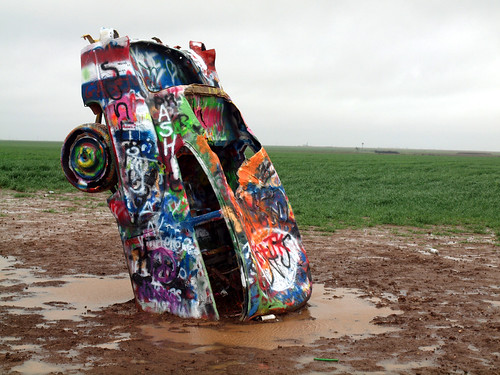
Cadillac Ranch is intended to be a "statement about the paradoxical simultaneous American fascinations with both a "sense of place" — and roadside attractions, such as The Ranch itself — and the mobility and freedom of the automobile." In the nearby town of Conway is the Bug Ranch, a sort of spoof on the Cadillac Ranch. Located along the freeway off-ramp are a selection of old VW beetles. Perhaps one day I'll start up a "ranch" with old Pontiac Vibes...

From there we travelled to the famous Big Texan Steak Ranch. This is the big restaurant in Amarillo that offers a massive 72 oz. steak which is free if you are able to eat it, along with a baked potato, salad, rolls, and some shrimp all under an hour. If you can't finish, your bill is only $72. We drove there in the rain, and hurried in. I did order a steak, but only got a wussy-sized 8 oz. Prime Rib.
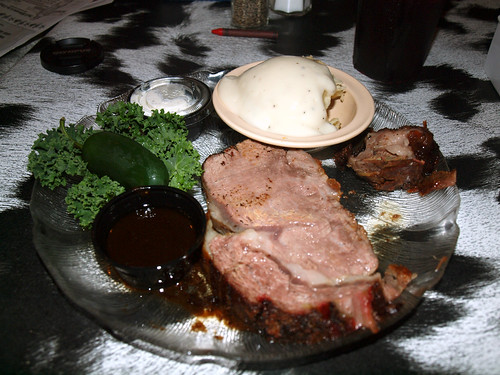
Which was good, and I did finish it...
The Big Texan is a neat place. While digesting your steak, you are invited to have your picture taken while sitting in an oversized rocking chair. So here I am being a big tourist:
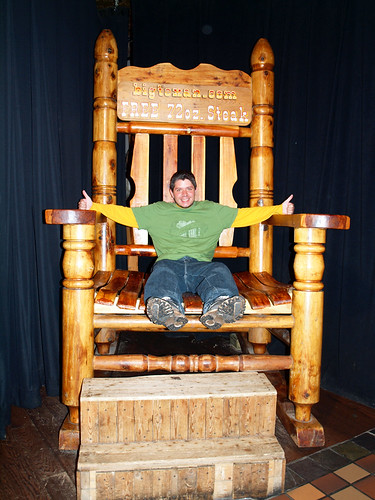
For a comparison, this was taken during a previous visit during a Road Trip in 2007.
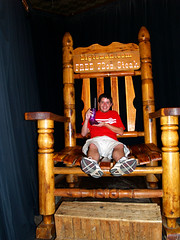
And a view of the Big Texan sign, standing in the stormy weather...
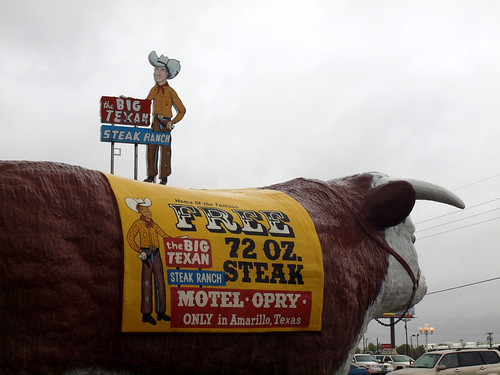
We headed west into Oklahoma, with hopes of visiting the Route 66 Museum in Elk City, but it was already closed for the day. Instead we continued on and paid a visit to Lucille's, a former fixture along Route 66. The station was ran by Lucille, who greeted travelers for decades. Sadly, when she passed away, the old station closed down as well. The station still sits, watching the traffic of I-40 and the occasional travelers along Route 66 drive past.
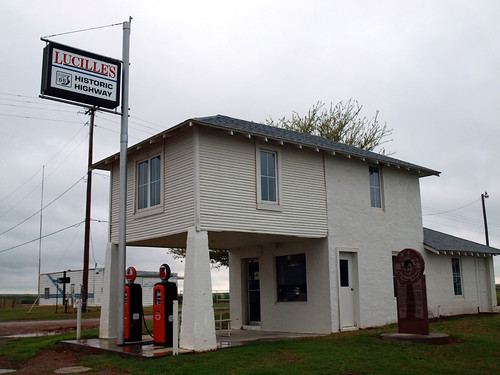
And that's about it for the road trip. We spent the night in Oklahoma City, and headed out the next morning towards home. We drove around 2,500 miles on the trip (I lost count of how many times we had to gas up). I took 1,375 pictures over the course of the week. I hope you had a good time looking at them - I wish my PTO time at work would build back up again since I need another vacation already....

